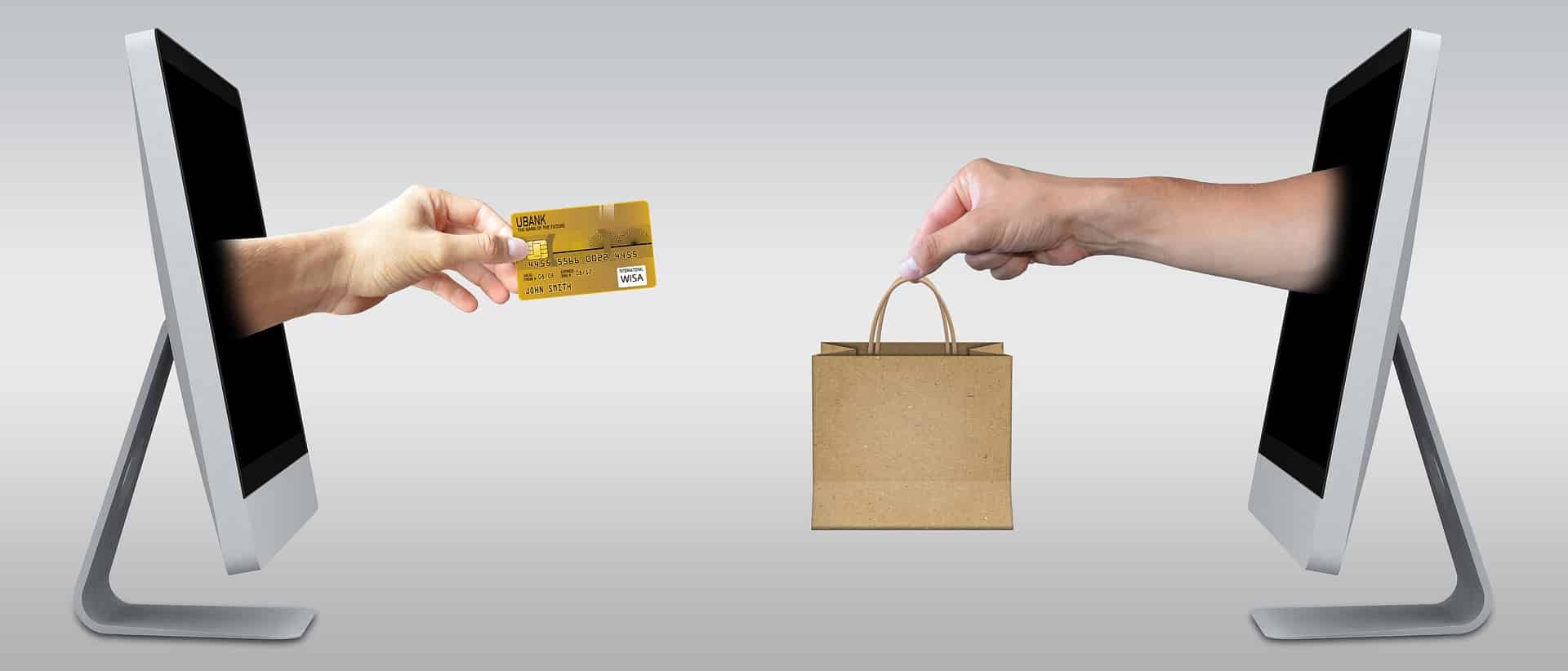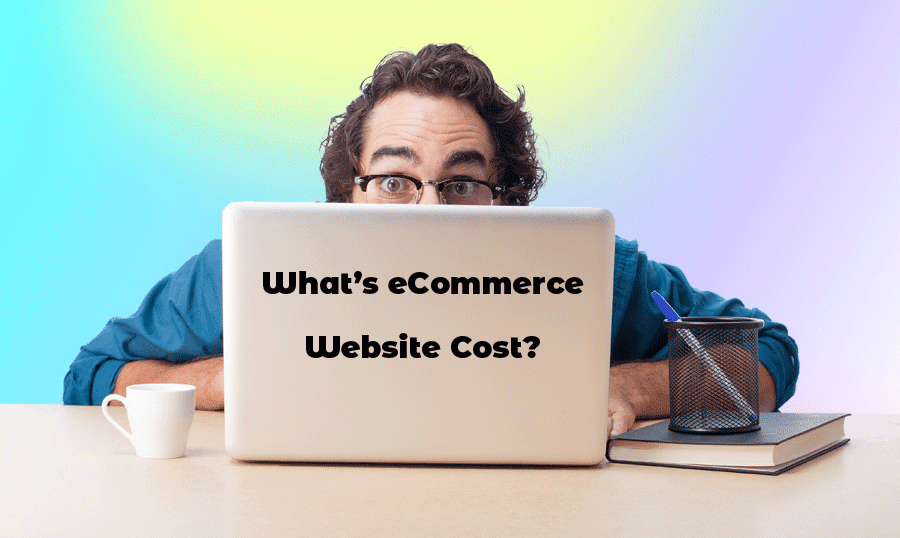What is An E–Commerce Business

An E-commerce business is a business model that completes the buying and selling of goods or services over the Internet. E-commerce businesses will digitally transfer money and data to execute these online transactions.
With e-commerce growing, with global retail e-commerce sales reaching nearly $5 trillion in 2021, now is an excellent time to start an online business.
If you’re a skilled entrepreneur or crafter, you probably dream of starting your own e-commerce store and building a business that will give you a sense of fulfillment and freedom. You will understand each step in this guide.
- How to Start an E-Commerce Business?
- How Much Does It Cost to Start An E-Commerce Business?
- Some Tips for Starting An E-Commerce Business
- In Conclusion
- Gua Sha Wholesale
How to Start an E-Commerce Business?
1. Find Product Opportunities and Decide What to Sell.
Find products to sell.

The first step in building an e-commerce store is to understand the products you want to sell direct-to-consumer. This is often the most challenging part of starting a new online business. How to find suitable, profitable products? This article will not go into too much detail, because there is too much content, we will talk about it in detail in later articles. In summary, look at market trends.
If you decide to enter the natural beauty industry, natural crystal & jade gua sha stone is a great choice!
Evaluate your ideas.
When you have a good product idea to sell, will it be popular with consumers? So it’s important to validate your product idea and potential market. There are many ways we can evaluate our ideas, which we will cover in detail in other articles.
Get your product.
Once you have a good product idea and verify that it works, how to get the actual product is the next key step. We have explained how to obtain good product suppliers in the previous article, you can refer to the practice in the article. We won’t go into too much detail in this article.
Natural gua sha or jade roller? Contact us! We are the leading gua sha factory, offering a one-stop solution!
Sell your products online.
When everything is in place, how can the product be turned into a benefit? Many independent retailers face a challenging road. Moving your brick-and-mortar business online can help you weather this storm, generate cash flow, and build a more resilient business. You need to find a good e-commerce solution to build your store, such as Shopify, if you have some experience, choosing WordPress is also a good choice.
2. Analyze Your Competitors and Write A Business Plan
Research your competitors
This is very important. As a beginner, you are still clueless about the challenges of your industry. Analyze your competitors through various channels, understand industry challenges and try to avoid them. In addition to this, you can differentiate your business from your competitors and enhance your business competitiveness. The content you need to analyze includes but is not limited to price, audience, product keywords, and product quality. There are many channels to choose from, and Semrush is a good one.
Write a business plan
After you’ve done your competitive research, it’s time to write your business plan. A business plan is a roadmap that helps bring your thoughts and ideas together. This is critical in determining priorities and how to effectively reach potential customers. The business plan also highlights your company’s mission statement to demonstrate your brand’s core values to investors and employees.
3. Choose A Logo and Name and Set Up Your Online Store

Choose a business name
Besides finding the actual product to sell online, another challenging decision is to decide on your business or brand name and choose a suitable and usable domain name. The right business name can easily make a profound impact on your customers and give a great boost to your business. You can get some ideas with some free name generators.
Create a logo
Once you’ve chosen a memorable name and registered the appropriate domain, it’s time to make a simple logo. Logos often represent a customer’s first impression of you. A good logo is often unique and complementary to your product, brand philosophy, etc. It doesn’t have to be complicated, but it definitely can’t be perfunctory.
Learn about Search Engine Optimization (SEO)
When all your work is done, before officially setting up your online store. You should first understand why search engines are and how to optimize. No in-depth knowledge is required, but the basics cannot be omitted so that you can properly build your website and pages for Google and other search engines. But remember, SEO is a complex and time-consuming process, and you need to make sure to keep learning.
Build your store
With a better understanding of search engines, it’s time to use a website builder to build your store. There are many key factors to consider. Build high-converting product pages, write engaging product descriptions, take great product photos, choose your e-commerce color palette, and more.
Choose your sales channel
In addition to Shopify, you can also expand your sales channels, Etsy, Amazon, eBay, and Facebook are all options. The right mix of sales channels depends on your product and target market, not more channels are better.
4. Choose Your Shipping Strategy and Set Sales and Marketing Goals
Which shipping strategy is right for you also depends on your product and target market. Whether to purchase products from suppliers to their own warehouses, and then ship them to customers, or choose to ship products directly from suppliers to your customers, that is, dropshipping depends on your actual needs. But good shipping should ensure that your customers receive the product within the scheduled time.
Setting a clear sales and marketing goal allows you to have a firm judgment on what to do every day, every week. Once launched, you know which metrics you should track and strengthen against weak spots.
5. Officially Start Business
When everything is in place, it’s time to go live with your e-commerce store. That’s when the hard marketing work begins. How to present your store to the right people is what you should focus on. How to market your store? Refer to the following points:
- Market your store via email
- Promote your store through social media such as Instagram, YouTube, Facebook, etc.
- Promote your store with paid advertising. Such as Google Search Ads, Facebook Ads, etc.
- Optimize your page to increase the conversion rate. Improve the user experience of the page and ensure that the traffic that will be imported into the store can be undertaken to the maximum extent. And you can conduct A/B testing to get better advertising effects.
- Analyze the data of the store through various channels, and optimize the insufficient areas in time.
The above points belong in a general direction. For more detailed issues, you can learn about them through various channels. In the future, we will also share corresponding skills and experience on these issues. If you are interested, you can continue to pay attention to us.
How Much Does It Cost to Start An E-Commerce Business?

If it is only for the cost of opening a store, it will be about $100. Mainly spent on subscriptions, buying topics, and domain names. In general, the cost of e-commerce companies is much lower than that of on-site companies, because there is no need to pay high rent, water bills, etc., and the number of licenses and so on.
There is no fixed standard for the specific cost. If you are an agency model, your cost may be lower. Because you don’t need to pay for raw materials, warehouse, and personnel costs, you only need to pay the corresponding payment to the supplier after the customer has paid. If you need to sell your own product, then you’re spending more. Because you need to pay the supplier in advance, and you also need to spend a certain amount on warehousing, personnel costs, etc. for the goods.
The barriers to entry in e-commerce are not high, but how much would you need to spend if you stretched it out to a year? The survey for this one item shows that new e-commerce store owners expect operating costs to total up to $40,000 in the first year (data for 150 U.S. entrepreneurs and 300 small business owners). Of course, these costs will eventually be returned to the business owner through sales profits. These costs include:
- Products: Products: raw materials, inventory, suppliers, manufacturing, patents, etc.
- Operations: registration/legal fees, additional software, commercial insurance, accounting, etc.
- Online store: website/platform subscription, hosting/domain name, contract development/design, etc.
- Transportation: packaging, labels, etc.
- Offline: booth/table fee, rent, gas, etc.
- Leam/employee: salary, benefits, allowances, etc.
- Marketing: logos, brands, advertisements, prints, business cards, etc.
In the first year, business owners spend:
- Operating cost: 11%
- Marketing cost: 10.3%
- Online fee: 9%
- Product cost: 31.6%
- Shipping fee: 8.7%
- Team fee: 18.8%
- Offline fee: 10.5%
Of course, that doesn’t mean you will definitely spend $40,000 to start your e-commerce store. The cost of the first year varies widely, depending on the industry and e-commerce business model, whether the business has employees, or whether it is a full-time job.
You also don’t need $40,000 in cash to start an e-commerce business. While many (66%) entrepreneurs use their personal savings to fund their businesses (respondents could choose more than one source of funding), they also use friends and family (23%) for financial support and personal loans (21 %).
Some Tips for Starting An E-Commerce Business
Starting an e-commerce business is exciting, whether it’s your first or your 10th, keep these tips in mind:
- Don’t focus too much on the first year’s earnings.
- Know your target audience.
- Sell products with market demand.
- Marketing and advertising are inevitable.
- Pay attention to the construction of external and internal links.
- Don’t ignore the quality of the product.
- Be different from your competitors.
Don’t Focus Too Much on the First Year’s Earnings.
The e-commerce business is a marathon, not a 100 sprint. It requires you to persevere and wait for a long time. So don’t judge a business’s success by its first-year profitability. Some people may make a lot of money in the first year, but in the following time, they will be completely stagnant. Some people may not have much income in the first year, or even lose money, but through continuous optimization, they can eventually succeed. Give yourself an 18 to 24-month runway to get your business off the ground. And constantly improve themselves, whether in store optimization or the accumulation of their own knowledge and constantly strengthen themselves.
Know Your Target Audience
Outside of developing or sourcing a product, you’ll spend most of your time capturing your customers’ attention. challenge? You want to get your products in front of the right customers—the ones who will actually buy from your website. Knowing these people, and your target audience can help you reach them faster and make more sales.
Sell In-Demand Products
Create or sell amazing products with proven market demands. Take a look at today’s top retailers – Allbirds, Tushy, Bombas – and you’ll find they all sell top tier products. “Product quality is critical because good products sell themselves,” said Eric Even Haim, CEO of upselling and cross-selling app ReConvert. “When you combine a great product with an audience who crave it, your marketing becomes 10x easier.”
Eric explained that new products don’t need to be “the next big thing.” You just have to “look for growing trends and markets where customers are underserved. Then step in with a great product and give them what they want!”
You can get some help through Google Trends.
Try Marketing and Advertising
It is very important to promote your new business after launch. You need to try different marketing strategies to understand where your audience hangs out and respond best to your content.
Test different online marketing strategies such as:
- Affiliate Marketing
- Instagram ads
- Website pop-ups
- Checkout upsells and cross-sell
- Natural search
- Content Marketing
- Loyalty Program
“Success depends on your ability to experiment, test, and analyze your advertising and marketing strategies,” said Stephen Light, chief marketing officer and co-owner of mattress company Nolah. “Experimentation is the best way to avoid getting caught up in any assumptions about your audience that might end up hurting you instead of helping you.”
Stephen recommends being open to the completely wrong things, “especially if you’re just starting out.” Use the data you collect to create more effective campaigns that increase traffic and profits. “Also, optimizing your ad campaigns and gathering data on how your customer base responds to them can help you shape the functionality of your website.”
Investing In Outreach and Link Building
Another tip for a new e-commerce store is to develop an outreach and link-building plan. These strategies can help improve your SEO ranking in Google.
James Taylor, the UK-based SEO consultant, says: “The sooner you adopt methods that will build and drive authoritative links to your site, the sooner search engines will see your site as an authority in their niche.”
“Search engines see links from authoritative sources as a vote of confidence in your site, so the more links you get from trusted sites, the more search engines will see you as authoritative.”
James advises new e-commerce store owners and marketers to invest in digital PR and link-building campaigns early on. This sets the stage for long-term SEO success, so you can rank higher on Google, get more organic traffic, and make more sales.
“The sooner you find a way to build links and drive authority into your site, the sooner search engines will see your site as an authority in their niche.”
Don’t Ignore the Quality of the Product
We have spoken in countless articles about the importance of product quality. Because it will be directly related to whether your business can generate a virtuous circle. If the product is of poor quality, customers may abandon your brand after a single purchase. And good product quality can greatly enhance customer loyalty to your brand.
So, don’t ignore the quality of the product if you plan to keep your e-commerce going for the long term.
Be Different From Your Competitors
There are many ways to stay different. Product style, price, quality, and brand identity. Being different from your competitors is an advantageous way to improve your competitiveness. Tell your customers why they choose that instead of other sellers of the same type and give them a reason to choose you. Of course, don’t stick to the “different” policy if you already know it won’t have a positive impact on you.
In Conclusion
Building your own e-commerce business can be both exciting and challenging. At a fast pace, you’ll learn a lot about choosing a product, evaluating its viability, figuring out how to make it, building an e-commerce site, and marketing and selling to new customers. The process feels like you’re solving a headache, but it’s still rewarding.
We hope following this roundup of resources helps give you a clearer roadmap. As always, the best advice anyone can give is to start and enjoy yourself in the process.
Gua Sha Wholesale
If you are interest to buld a beauty brands, gua sha is a great product for you! As the leading gua sha factory, we have more than 100 different gua sha stones to choose from, and customized services offer! You will meet your needs here!






